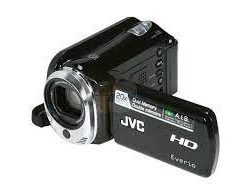
The All-new Honda Motocompo XL Bike – What’s Different?
Honda’s new Motocompo XL bike is a welcome addition to the world of electric bikes. It’s not only stylish and modern, but it’s also packed with features that make it a great choice for those looking for an alternative to traditional gas-powered bikes. Here’s a look at what’s different about the Motocompo XL:
– The Motocompo XL comes with a powerful 250-watt motor, which is significantly more powerful than most other electric bikes on the market. This makes it a great choice for those who want to get around quickly and easily.
– The Motocompo XL also comes with a larger battery pack than most other electric bikes, meaning that it can go for longer distances without needing to be recharged.
– One of the most notable features of the Motocompo XL is its “saddle-free” design. This means that there is no uncomfortable seat to deal with, making it a more comfortable ride for those who don’t like traditional bike seats.
– The Motocompo XL also comes with a built-in display that shows the battery level, speed, and other important information. This is a great feature for those who want to keep track of their progress and make sure that they’re not running out of juice.
– Finally, the Motocompo XL comes with a built-in GPS system. This is a great feature for those who want to be able to track their rides and see where they’ve been.
All in all, the Motocompo XL is a great choice for those looking for an electric bike that is packed with features and is stylish and modern. If you’re looking for an alternative to traditional gas-powered bikes, the Motocompo XL is definitely worth considering.
We’ve all seen the all-new Honda Motocompo XL bike. It’s been released, and it’s been getting a lot of attention. But what’s different about it?
For starters, the new Motocompo XL is now available in two different models – the standard Motocompo XL and the Motocompo XL Plus. Both models come with a few different features and benefits.
The standard Motocompo XL comes with a 21-speed Shimano drivetrain, an aluminum frame, and a 100mm suspension fork. It’s also got hydraulic disc brakes, which is a nice touch.
The Motocompo XL Plus, on the other hand, comes with a 24-speed Shimano drivetrain, a carbon fiber frame, and a 120mm suspension fork. It also has hydraulic disc brakes.
So, what’s the difference between the two models? Well, the standard Motocompo XL is a bit lighter and it’s got a slightly lower price tag. The Motocompo XL Plus is a bit heavier and it’s got a slightly higher price tag.
Other than that, they’re pretty much the same bike.
So, what do you think? Is the new Honda Motocompo XL bike worth the hype?

